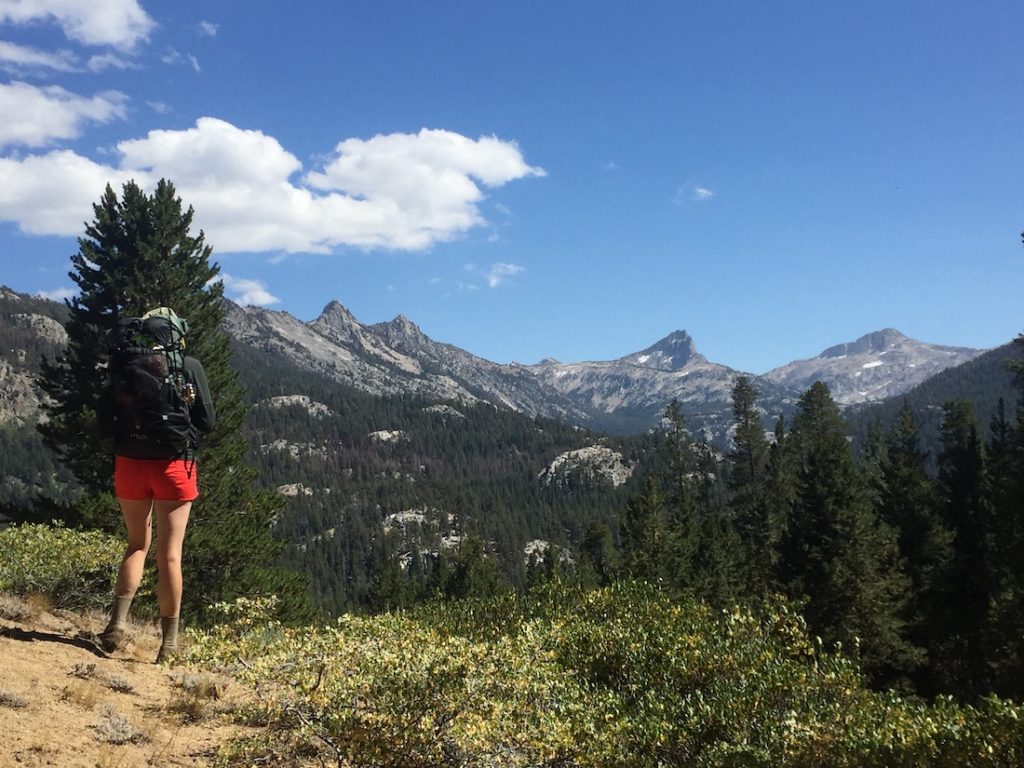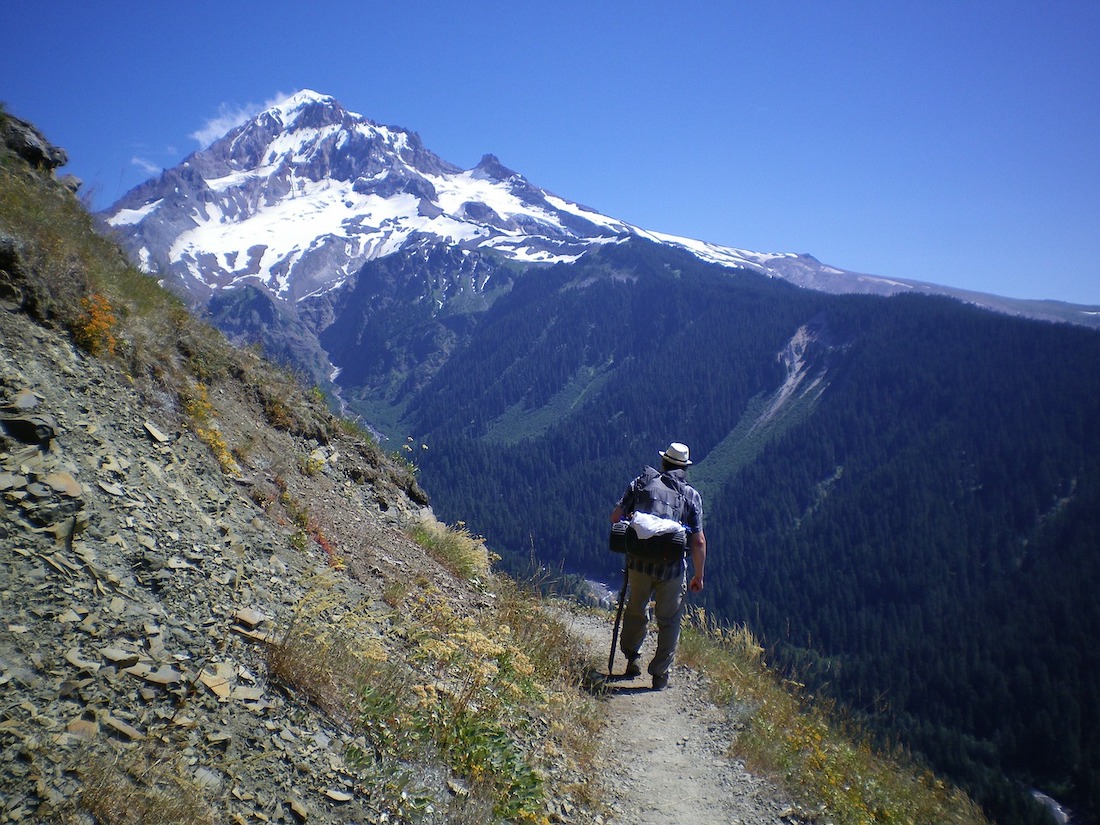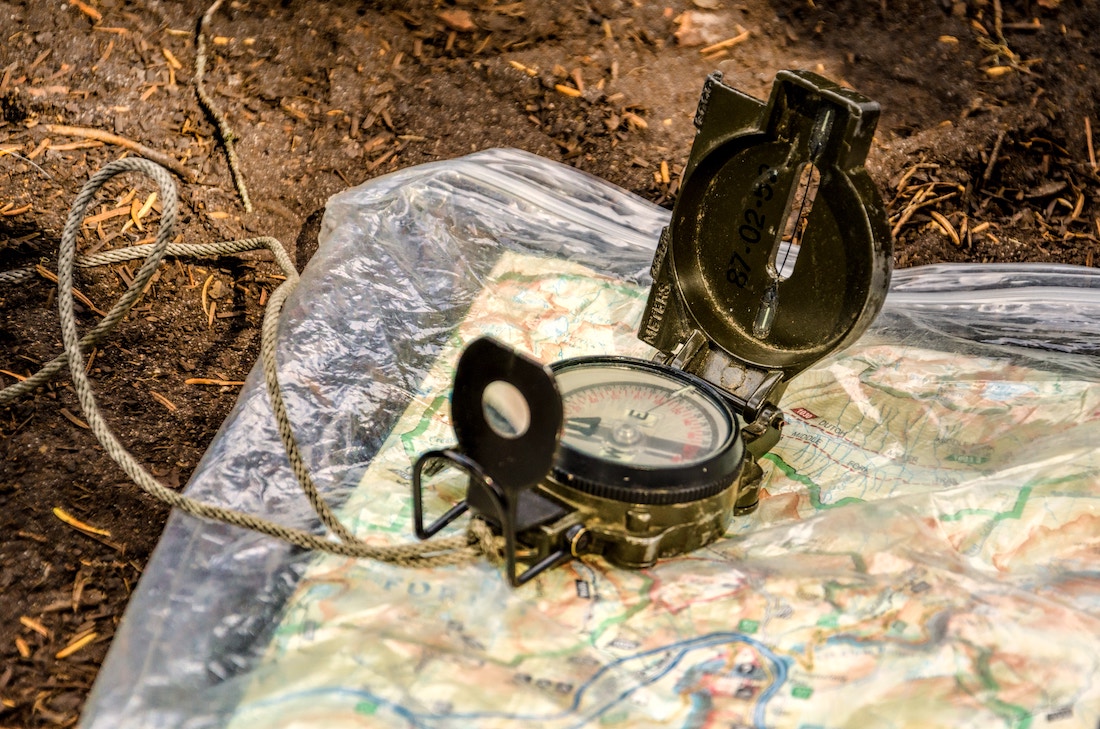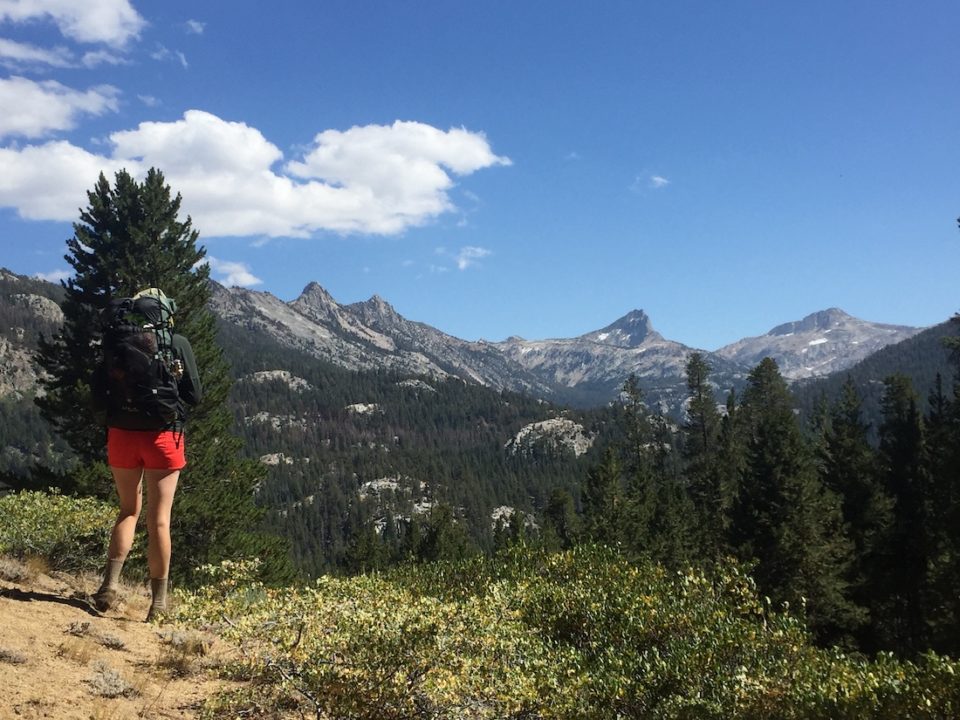When asked, I often describe the lowest point of my time on the Pacific Crest Trail as occurring in the hours after I, a person who has eaten neither gluten nor red meat for many years, annihilated not one, but two cheeseburgers in a fit of extreme hiker hunger. But the truth is that a much worse thing actually happened about a week earlier.
As I topped out on a steep climb in the Sierra, my phone suddenly lurched to life, delivering a pair of texts from my friend Jay, who was staying at my apartment for the summer. One of the messages contained a snap of my rather hefty feline, Eddie Cat Halen (RIP), splayed across his face and compromising his breathing at some painful morning hour; the other, a photo of an eviction notice Jay found taped to my door. A sharp panic twisted my guts. I knew I’d paid my rent in advance before hitting the trail; I just had figure out how to fix this mess before my single, sputtering bar of service disappeared.
Luckily, I had not only given Jay my property manager’s contact information, but had also informed my landlord that he would be kicking it with Eddie all summer. Thus, it was a relatively simple fix to have my buddy dig up my checkbook, note the payment details, and call my rental overlords to correct the mistake. But the experience underscored just how easily something can go south when you’re way out there, especially on a weeks- or months-long thru-hike. Here’s how to tip the scales in your favor well before your boots (or trail runners) hit dirt.
1. Figure out life stuff
I was lucky that Jay needed a place to stay while I was out on the PCT that summer, especially since there was no way in hell I was giving up my rent controlled apartment in Los Angeles. But after coming up empty while preparing for a Colorado Trail hike a few summers later, I went with a friend-of-a-friend-of-a-friend who would rent my place on the cheap in exchange for keeping Eddie alive. That is, until I received a text message about two weeks into my trip that she didn’t want to hang out with my very affectionate cat, after all. The lesson here? Having cell service on trail is the worst.
 Photo: Justin Housman
Photo: Justin Housman
Seriously, though—most folks will need to sort out some mix of people, pets, property, and bills before leaving home for a long trip. Besides squirreling away money to pre-pay my rent, I also set my existing bills to auto-pay, arranged for a friend to drive my car a few times in my absence, stocked up on cat food and litter, and gave my neighbors both a heads up and a key to my apartment. I also created a rough outline of my schedule, which I sent to two friends who would receive daily pings from my PLB device, and left the same document in my apartment, along with contact information for my vet, property manager, neighbors, and immediate family.
2. Check your gear
You can find endless advice on what gear to use on a thru-hike, but I think the most prudent advice is to make sure that your gear actually works. Case in point: Just a few days before I departed for a thru-hike in Colorado, I discovered that the zipper on my tent fly had gone off its rails in a way that was completely unfixable. Oh, and the manufacturer was no longer producing that model. By some miracle, I was able to have a new tent delivered to a friend’s address in Denver the afternoon before I left for the trailhead. But had I conducted a gear check a little earlier in the game, I would have caught it before descending into panic mode.
Ensuring your gear works isn’t just about making sure it’s not broken—it’s making sure that gear is functional for you. The exact moment I discovered that foregoing a stove and cold-soaking my food wasn’t for me was during a long stretch of the PCT in the southern Sierra, when I resorted to crumbling Cheetos and Fritos on top of chilly, gloppy chunks of mac and cheese and instant mashed potatoes to liven them up. Sad times.

Photo: Needpix
3. Create a packing list
Even if you are not one of those people who enjoy making lists just for the sweet satisfaction of crossing things off of those lists (ahem), creating a master list of what you need to pack for a big trip can help ensure you’re not, say, dropping $80 to buy a pair of wool leggings in the middle of Colorado, even though you, say, have two pair sitting cozy in your dresser back at home (ahem).
4. Decide on a resupply plan
Among thru-hikers, discussing resupply strategies is right up there with discussing footwear—everyone has an opinion, but your mileage may vary. The quick and dirty is that if you are flexible on what you eat (and what you spend), you can probably get away with resupplying as you go, as long as you’re prepared to stock up gas stations and small-town markets that feature a relatively slim selection. Your diet may consist of not much more than ramen, peanut butter, tortillas, instant potatoes, and packaged rice, but the upside is that the next time you see an orange, you might just weep with joy.
If you have food sensitivities or allergies, want more variety in your vittles, enjoy cooking your own meals, have a strict budget, or need to send ahead medicine and other supplies that may be difficult to buy along the way, it’s a good idea to prepare at least a handful of pre-packaged resupply boxes. But keep a few caveats in mind. Not only may your pace or even itinerary change once you’re on trail, but your tastes can shift, as well (instant oatmeal is now my sworn enemy); leave the boxes and some cash with a friend and check in with any changes. Oh, and as I discovered the hard way, you may lose precious cargo if it arrives too long before you do—many places, from post offices to private businesses, will only hold your goods for so long. Au revoir, my long-lost packages of expensive, freeze-dried yellow curry.
5. Set a budget
Ask any ten long haulers how much they dropped on their thru-hikes and you’re bound to receive ten different answers. Is it $1 a mile? Or maybe it’s $1,000 a month? Mysteries of the unknown! What is knowable is that lots of hikers drop because they run out of cash.
While some people can stitch together a thru-hike on little more than a wish and a prayer, I recommend not only estimating on the conservative side, but also doing this early in the planning process so that you have time to sock away some dough. It’s not only existing bills (car payments, health insurance, cell phone, Netflix, etc.) that you’ll need to pay for, it’s food (both on trail and in town), the gear you’ll need to purchase (or replace along the way), transportation to and from the trail, lodging (campgrounds and town stops), “tips” for trail angels (especially those who host hikers), laundry, pay showers, celebratory beverages, resupply postage—with a bonus on top for emergencies. Once you’ve drummed up a number? Stick with it, lest the town vortex suck your wallet dry.

Photo: Thomas Thompson
6. Learn some bonus skills
I can’t recommend enough that all backpackers—not just thru-hikers—learn wilderness first aid, which covers how to handle medical emergencies when you’re far away from help. While the worst I’ve dealt with on trail is a dislocated shoulder (not mine, thankfully), I know others who’ve either experienced or helped fellow hikers with broken limbs, head injuries, heart attacks, and beyond.
I also suggest learning how to navigate using a map and compass. Sure, most thru-hikes stick to established trails, but knowing how to read a topo map and correlate that to the landscape is a great way to identify nearby features, scout for campsites, or find your way when the trail has been obliterated by snow, rockfall, flooding, or a mudslide. Or, say, when you are forced to concoct an impromptu reroute because your path is blocked by a gathering of very surly cows.
7. Power up your phone
Most hikers download trail-specific or other mapping apps to their phones, but those powerful little rectangles are good for more than just photos and navigation. I load mine up with contact information for hostels, laundromats, trail angels, land managers, post offices, sporting goods stores, and markets along my route. I also use my phone to store PDFs of instructional manuals for electronics or complicated gear items, my rough itinerary, and basic wilderness first aid instructions. Once, I even uploaded a doc outlining just what to do in case of a lightning storm, because adrenaline panic is real.
8. Get inside your head
While some people risk their hike by setting out without having prepared their body for the rigors, far more begin without ever preparing their minds. Time on trail offers a lot of time to think some big, beautiful, perhaps even life-altering thoughts, but all of those thoughts can also trigger uncomfortable feelings. Undertaking a few shorter solo trips before the big one can help sort out what topics bubble up when you’re crunching miles, and offers the opportunity to work out how you might process these thoughts on a longer, more committing trip.
I often ask myself a few questions before setting out on a big trip: Why am I doing this? How am I going to deal with “bad” days? How am I going to feel if I need to duck out early? How will I handle the inevitable sadness when the experience is over? I may not know the exact answers going in, but taking that time to be honest with myself is more valuable than any single piece of gear—or advice.
For more of Salabert’s advice on the PCT, check out her book.
Top photo: Emerson Ward


1 comment
Good site! I really love how it is easy on my eyes and the data are well written. I am wondering how I could be notified when a new post has been made. I’ve subscribed to your RSS feed which must do the trick! Have a great day!